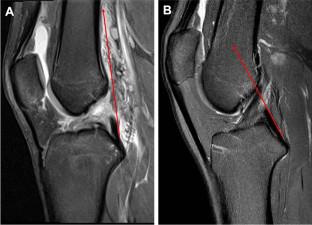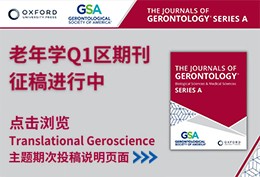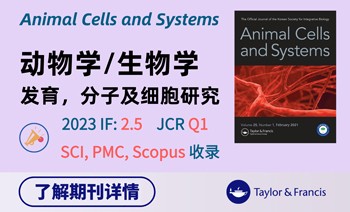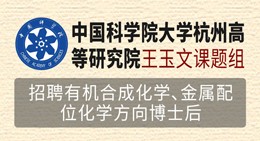Knee Surgery, Sports Traumatology, Arthroscopy ( IF 3.3 ) Pub Date : 2022-09-03 , DOI: 10.1007/s00167-022-07145-6
Renaud Siboni 1, 2 , Charles Pioger 1, 3 , Caroline Mouton 1, 4 , Romain Seil 1, 4, 5

|
Purpose
The aim was to validate a new MRI method to measure the buckling phenomenon of the PCL, representative of anterior tibial translation, by comparing its reliability and accuracy to identify anterior cruciate ligament (ACL)-deficient knees with existing methods.
Methods
Patients were selected retrospectively and separated into a group of primary ACL injuries and ACL-intact knees. Exclusion criteria were: skeletal immaturity, PCL or a concomitant collateral ligament injury, signs of osteoarthritis (> 1 Kellgren and Lawrence score), tibial plateau fracture, previous ACL reconstruction or displaced meniscal bucket handle tear. The assessment of the curvature of the anterolateral bundle of the PCL was performed on T2 sagittal MRI slices according to 3 methods: (1) the PCL angle (PCLA), (2) the PCL inclination angle (PCLIA) and (3) a new method: the PCL-posterior cortex angle (PCL–PCA), representing the angle between the vertical part of the PCL-ALB and the posterior diaphyseal cortex of the femur. For each method, the inter- and intra-observer reliability was measured. The ability to discriminate both ACL-deficient and ACL-intact knees was evaluated using ROC curves.
Results
Twenty-four patients were included in each group. Intra-observer reliability was excellent for all 3 methods (ICCs > 0.90). Inter-observer reliability was excellent for the PCL–PCA (ICC > 0.90) and good for the PCLA and the PCLIA (ICCs between 0.75 and 0.90). The PCL–PCA had the highest precision (lowest standard error of measurement: 2.7°). It yielded an excellent discrimination between the ACL and CTL groups (AUC 0.80 [0.67–0.93]) with the highest sensitivity (71% [52.8–89.2]) and specificity (88% [75–100]) for a positive threshold when the angle was ≤ 22.7°. The PCLA and PCLIA methods led to acceptable discrimination and lower sensitivities and specificities (PCLA: AUC 0.71, sensitivity 63%, specificity 79%, threshold ≤ 117.9°; PCLIA: AUC 0.62, sensitivity 50%, specificity 83%, threshold ≤ 21.4°).
Conclusion
In comparison with previously described methods, the PCL–PCA was the most reliable and accurate method to measure the PCL buckling phenomenon on MRI in anterior cruciate ligament (ACL)-deficient knees. It offers an easy and objective method for the follow-up of ACL-injured patients and can therefore be recommended for routine use.
Level of evidence
IV.
中文翻译:

后交叉韧带-股骨后皮质角:一种可靠且准确的 MRI 方法,用于量化 ACL 缺陷膝关节中 PCL 的屈曲现象
目的
目的是通过比较其可靠性和准确性来验证一种新的 MRI 方法来测量代表胫骨前移的 PCL 屈曲现象,以识别前交叉韧带 (ACL) 缺陷膝关节与现有方法。
方法
患者被回顾性选择并分成一组原发性 ACL 损伤和 ACL 完好的膝关节。排除标准为:骨骼不成熟、PCL 或伴随的侧副韧带损伤、骨关节炎迹象(> 1 Kellgren 和 Lawrence 评分)、胫骨平台骨折、既往 ACL 重建或移位的半月板桶柄撕裂。根据 3 种方法在 T2 矢状 MRI 切片上评估 PCL 前外侧束的曲率:(1) PCL 角 (PCLA),(2) PCL 倾角 (PCLIA) 和 (3) 新的方法:PCL-后皮质角(PCL-PCA),表示PCL-ALB垂直部分与股骨后骨干皮质之间的夹角。对于每种方法,测量了观察者间和观察者内的可靠性。
结果
每组包括 24 名患者。所有 3 种方法的观察者内部可靠性都非常好 (ICC > 0.90)。PCL-PCA (ICC > 0.90) 的观察者间可靠性非常好,PCLA 和 PCLIA 良好(ICC 在 0.75 和 0.90 之间)。PCL–PCA 具有最高的精度(最低测量标准误差:2.7°)。当角度≤22.7°。PCLA 和 PCLIA 方法导致可接受的歧视和较低的敏感性和特异性(PCLA:AUC 0.71,敏感性 63%,特异性 79%,阈值 ≤ 117.9°;PCLIA:AUC 0.62,敏感性 50%,特异性 83%,阈值 ≤ 21.4° ).
结论
与之前描述的方法相比,PCL-PCA 是测量前交叉韧带 (ACL) 缺陷膝关节 MRI 上 PCL 屈曲现象的最可靠和准确的方法。它为 ACL 损伤患者的随访提供了一种简单而客观的方法,因此可以推荐常规使用。
证据等级
四、

































 京公网安备 11010802027423号
京公网安备 11010802027423号